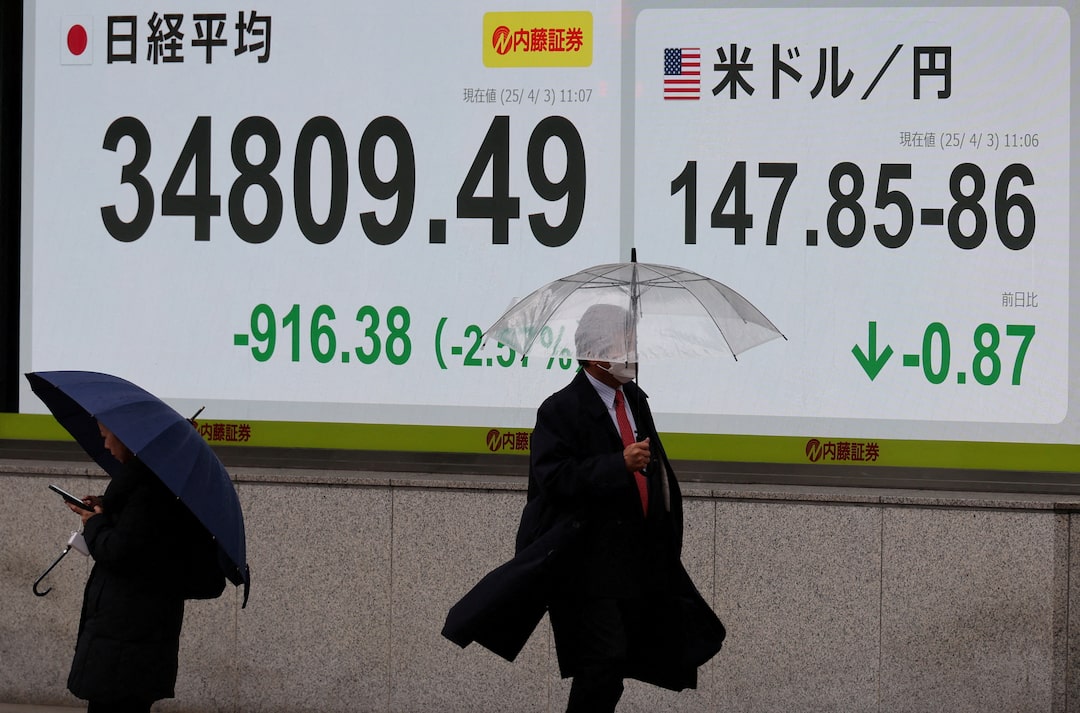But Trump then unveiled much higher tariffs against some of the country’s biggest trading partners. Some of China’s neighbors and biggest trading partners such as Bangladesh, Vietnam, Laos and Cambodia were slapped the highest tariffs.
Some multinational companies have moved their supply chains to these countries as they looked to diversify away from China amid Sino-U.S. tensions that ratcheted up under Trump’s first administration.
Exchange-traded funds on these markets listed in New York slumped on the news.
“These figures aligned more closely with aggressive tariff scenarios, putting pressure on risk assets while temporarily supporting the dollar,” said Uto Shinohara, senior investment strategist at Mesirow Currency Management in Chicago.
Analysts expect trading partners to respond with countermeasures that could lead to dramatically higher prices for everything from bicycles to wine.
“We’ve just got one side of the story, which is what we’re doing. And the other side of the story is how other countries respond to what we’re doing,” Walter Todd, chief investment officer at Greenwood Capital in Greenwood, South Carolina, said. “So that’s a big component to how the market ultimately digests what is being said right now.”
Don Calcagni, chief investment officer at Mercer Advisors, said the tariffs bode ill for the global economy.
“We are very early innings on what could unfortunately turn into a very serious global trade war,” Calcagni said.
The developments come at a particularly crucial moment for investors in U.S. stocks. In mid-March the S&P 500 confirmed a correction, a drop of 10% from a recent high. The index finished Wednesday’s regular trading session 8% below its February record high.
“The tariffs are so comprehensive and so much larger than we expected. People were talking earlier about whether clarity would boost the market. But now you have clarity, and no one likes what they see,” said Jeanette Garretty, chief economist at Robertson Stephens.
Reporting by Saqib Iqbal Ahmed, Nupur Anand and Laura Matthews; Additional reporting by Suzanne McGee and Carolina Mandl; Editing by Megan Davies, Richard Chang, Sharon Singleton, Nick Zieminski, Andrea Ricci, David Gregorio, Nia Williams and Leslie Adler







